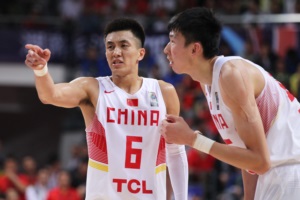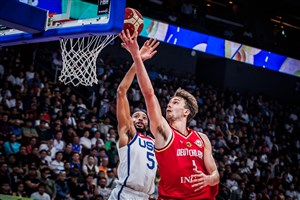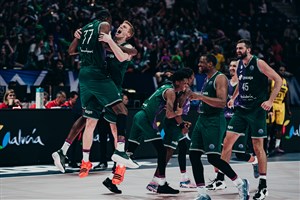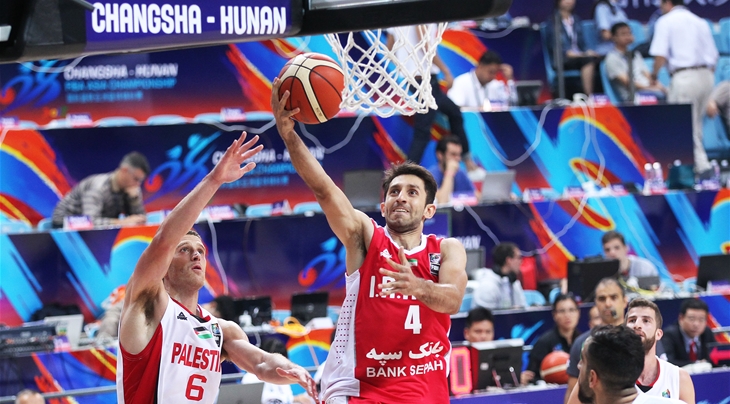
What's coming next when Iran's golden generation heads into sunset?
REGENSBURG (David Hein's Eye on the Future) - The 2015 FIBA Asia Championship most likely saw the end of an era as Iran's failure to defend their title may result in the start of a changing of the guard.
The veteran core of Hamed Haddadi, Samad Nikkah Bahrami and Mahdi Kamrani helped Iran to the 2007, 2009 and 2013 FIBA Asia Championship titles. Hamed Afagh, Javad Davari and Oshin Sahakian were also all major parts of those three successful Iranian teams.
But that sextet of players no longer ranges in age from 21 to 25 years old as they did when capturing their first Asian crown in 2007 in Tokushima. At the 2015 edition of the championship - which concluded last Saturday in Changsha-Hunan - Sahakian played as a 29-year-old, Kamrani was 33, Haddadi 30 and Afagh, Bahrami and Davari all 32.
And that added age showed in as both the Philippines and China beat Iran with quicker, younger and more dynamic players.
Iran lost to the Philippines in the Second Round of action and then to hosts China in the Semi-Finals. Bahrami bounced back in classy style with eight three-pointers in scoring 35 points as Iran claimed the final spot on the podium by knocking off Japan.
The Iranians' third-place finish did secure them a berth in FIBA's Olympic Qualifying Tournaments (OQTs) taking place next summer. But it's unclear if the veteran core will be back for one final run at the Olympics - knowing how difficult it will be to win one of the three OQTs.
A couple of them will likely play but 2016 is surely to see a true changing of the guards.
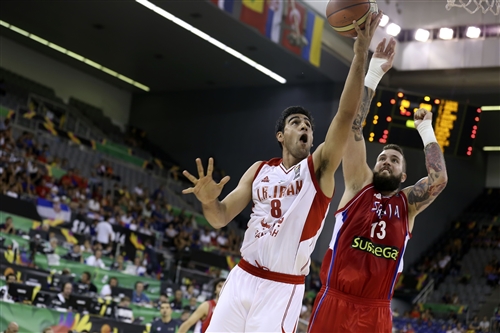
Arsalan Kazemi (IRI)
The best Iranian player not in Changsha was Arsalan Kazemi, who will be playing for the Atlanta Hawks this coming season. The small forward is 25 years old and has played three summers with the Iranian senior team.
After playing a major role at the 2010 FIBA Basketball World Cup, Kazemi was on the Iran side that lost to Jordan in the Quarter-Finals of the 2011 FIBA Asia Championship. He also represented Iran at the 2014 FIBA Basketball World Cup.
His presence will be a big help long term. But Iranian basketball leaders will be hoping the next generation of players can begin to make their mark on the team.
Some of that next wave has already been brought into the mix. Last summer, 19-year-old Behnam Yakhchali played at the World Cup and averaged 2.6 points and 1.6 rebounds while 20-year-old point guard Sajjad Mashayekhi was on hand in Spain but did not play.
Both players made the team in 2015 and played more of a role for Iran coach Dirk Bauermann.
Mashayekhi took advantage of another summer under the tutelage of the veteran Kamrani. The young playmaker averaged 6.1 points, 2.4 assists, 2.2 rebounds and 1.3 steals in 16 minutes per game.
The shooting guard Yakhchali meanwhile chipped in 4.0 points, 3.1 rebounds and 1.3 assists in 12 minutes off the bench. That duo along with Kazemi will likely become the next leaders of Iran’s next core.
But there must be more to come if Iran want to remain in the hunt long term for the podium.
Two other players from the 1994-born generation who could slowly make in-roads are Rasoul Mozafarivanani and Saleh Foroutannik, both of whom played at the 2013 FIBA U19 World Championship.
Another member of that team actually might be the power forward of the future for Iran.
Mohammad Yousof Vand actually played at the 2013 U19 Worlds as a 17-year-old and then was one of the most productive players at the 2015 FIBA U19 World Championship. He averaged almost 15 points and 14 rebounds as well as 2.7 assists and 2.7 steals this summer.
The 19-year-old collected 22 points, 21 rebounds and six steals versus Egypt and added a 24-point, 12-rebound and six-steal game against Serbia. Yousof Vand also was named MVP at the NBA/FIBA Basketball Without Borders Asia camp in 2014.
Yousof Vand's U19 teammate this summer Navid Rezaeifar is a shooter who could eventually join him in the senior national team.
If Haddadi, Bahrami, Kamrani and Co. actually do head off into the national team sunset, Iran will need a quick transition to the next generation.
The revitalized young Chinese will not be going anywhere while Philippines are still on the rise and Japan might have turned the corner.
And joining FIBA Asia in 2017 will be Oceania powerhouses Australia and New Zealand. Those two will definitely challenge for the podium in every Asian competition they participate.
All this leaves Iranian fans wondering how much success their team will have. They only had one top-four showing between 1981 and 2005 when their golden generation came onto the scene.
That group is slowly on its way out. And we will find out in the coming years if the next group is close to the same standard.
David Hein
FIBA
FIBA's columnists write on a wide range of topics relating to basketball that are of interest to them. The opinions they express are their own and in no way reflect those of FIBA.
FIBA takes no responsibility and gives no guarantees, warranties or representations, implied or otherwise, for the content or accuracy of the content and opinion expressed in the above article.


